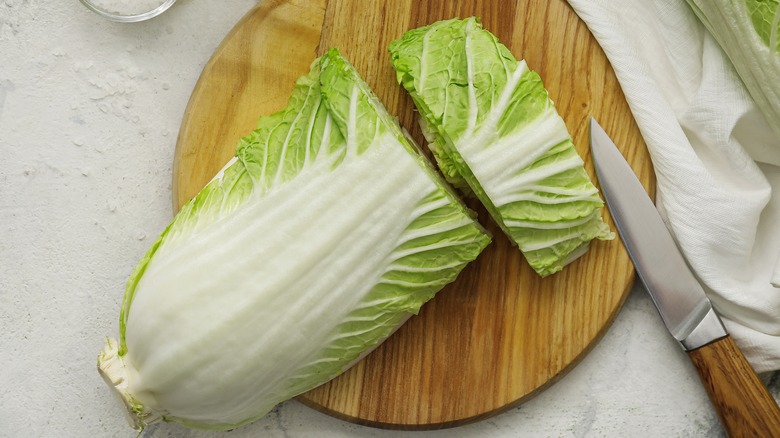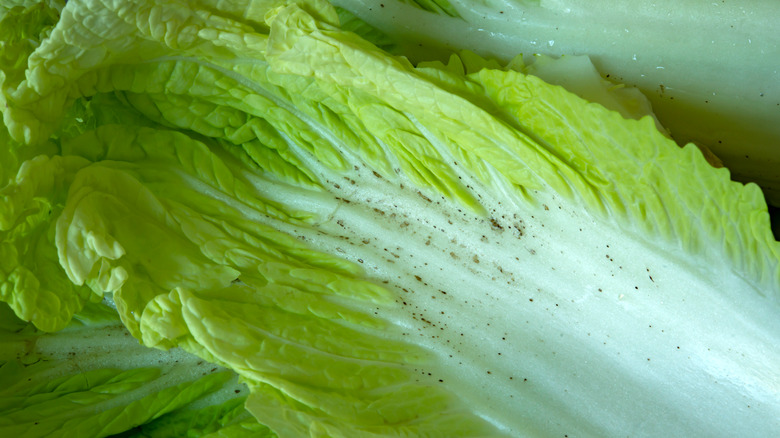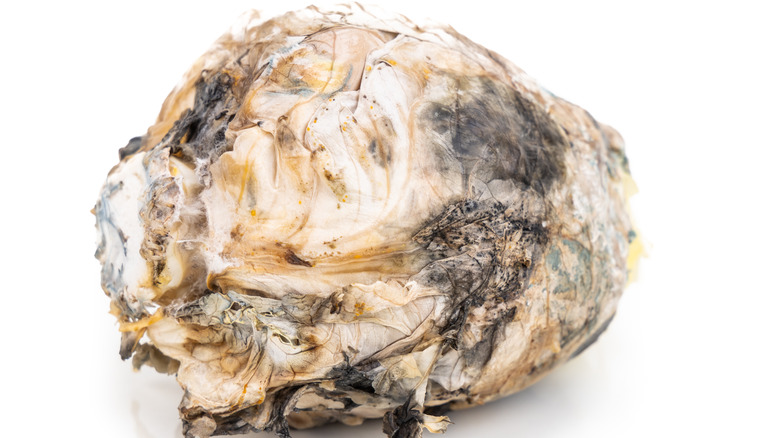What To Do If Your Napa Cabbage Has Tiny Black Spots
Napa cabbage lends itself wonderfully to many dishes, whether it's roasted, grilled, fermented, stuffed, or transformed into a slaw. Unlike the tightly wrapped green or purple orbs, it has an elongated head of leafy lettuce with delicate green leaves that cover a yellow center. Sweet and teeming with health benefits — it's especially rich in fiber, folic acid, and vitamin C — napa cabbage is always a good choice. But, while blemish-free leaves are the most aesthetic choice for showing off your culinary creations, does that mean ones flecked with tiny black spots are a cause for concern?
While you can spot defects on cabbage at any point in time, buying blemish-free produce to begin with is always wise. That said, it's important to keep an eye out for specific characteristics. While napa cabbages will get heaviest during their peak growing season in the winter, picking up a head that feels heavy for its size is always a good idea. Likewise, it should have firm and compact leaves free of bruises. As for cabbages that look like they were sprinkled with pepper ... don't write them off just yet.
Pepper spots aren't anything to worry about
While those little black spots on napa cabbage leaves aren't specks of dirt, they aren't necessarily a sign of spoilage either. The reality is that these sesame seed-sized dots found on the outside of cabbage heads are totally normal. Referred to as pepper spots, petiole spots, gomasho, or vein necrosis, they are a natural result of the plant's growing and/or storage conditions. The University of Florida Extension explains that they are typically due to genetics but can also be associated with environmental factors like high soil pH, and excessive use of nitrogen or phosphorus-rich fertilizers.
Little more than a cosmetic issue, leaves with pepper spots are totally safe to eat and will have the same taste and texture as leaves without this particular blemish. That said, while you can buy heads of petiole-spotted cabbage without a second thought, make sure that you don't confuse these markings with mold.
Deciphering pepper spots from mold spores
Although pepper spots are plausible, sometimes dark flecks can indicate the presence of mold, particularly if the cabbage was stored improperly. Unsure how to tell them apart? Generally, black mold spores will appear either fuzzy or slimy in texture. But that's not all. Another tell-tale sign that these marks might indicate spoilage is assessing whether the cabbage displays other signs of decay. Limp leaves, any discoloration, and ammonia aromas suggest that the head of napa cabbage has passed its prime.
Depending on the level of degradation, napa cabbage can sometimes be salvaged. For instance, if there are just a few indistinguishable spots, remove any stained outer leaves before cooking cabbage steaks or making your next fresh batch of kimchi. However, should the inner leaves also be dotted with dark spots, discarding the cabbage entirely is probably best. After all, composting heads of less-than-fresh-looking cabbage is safer than being sorry!


